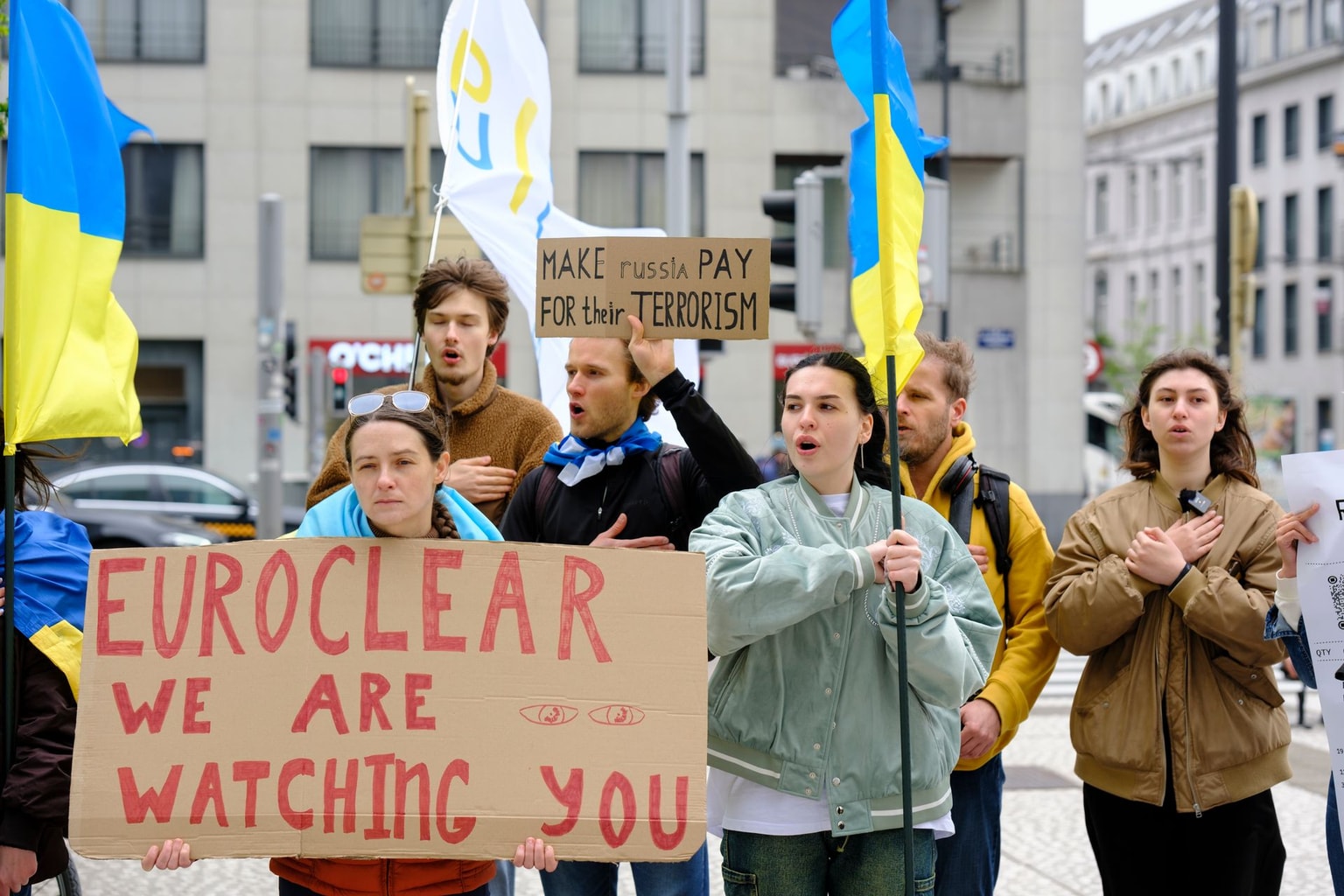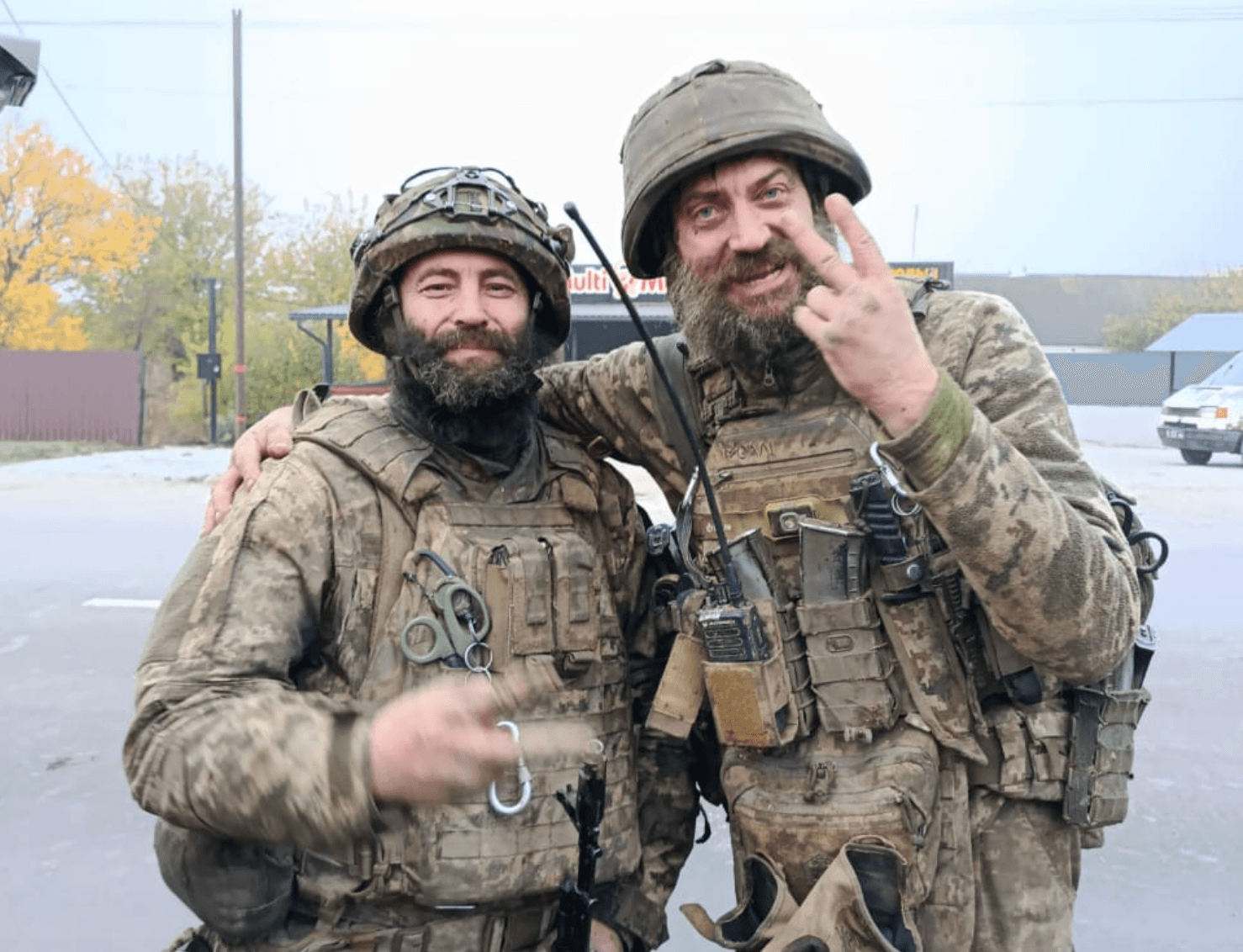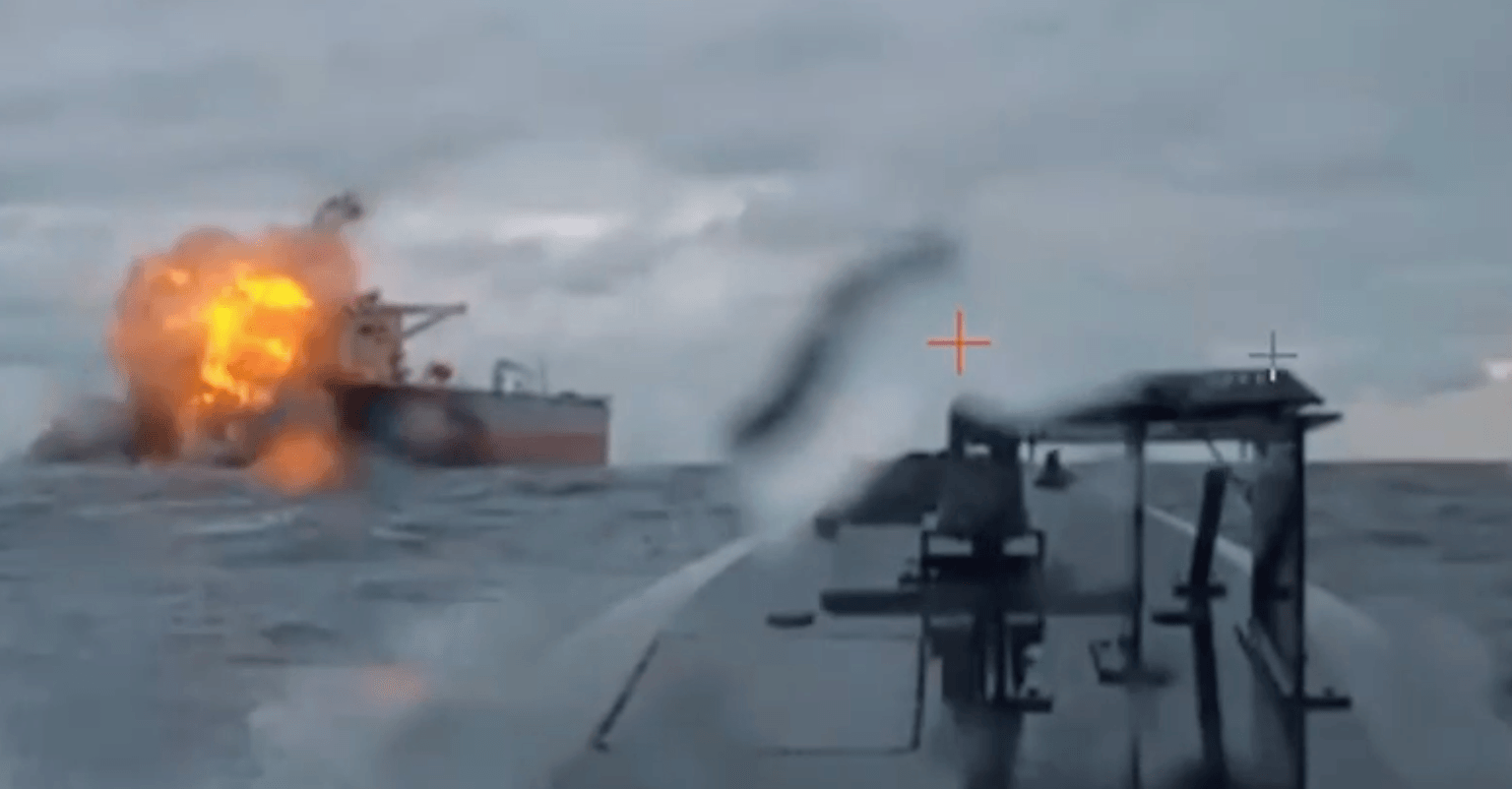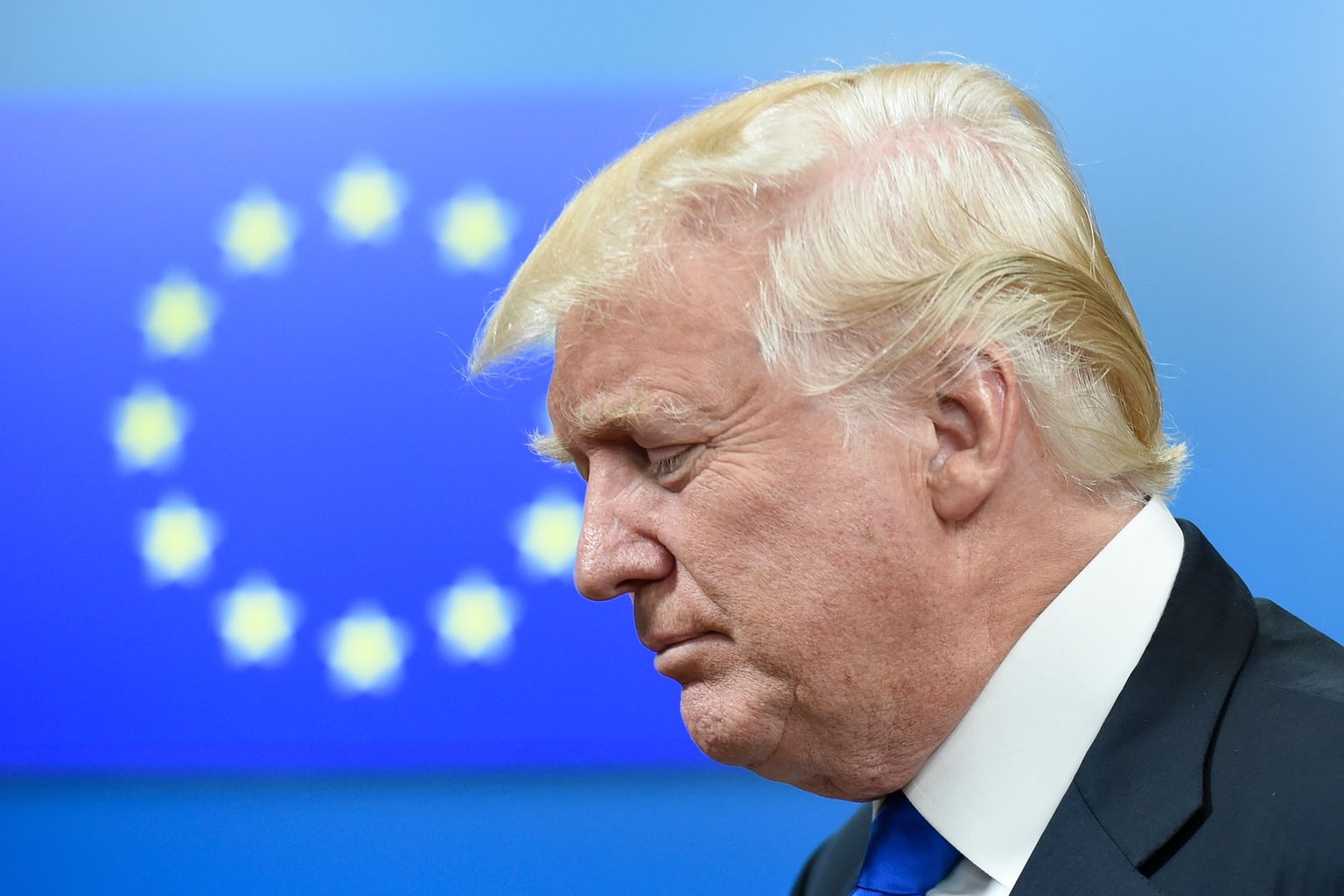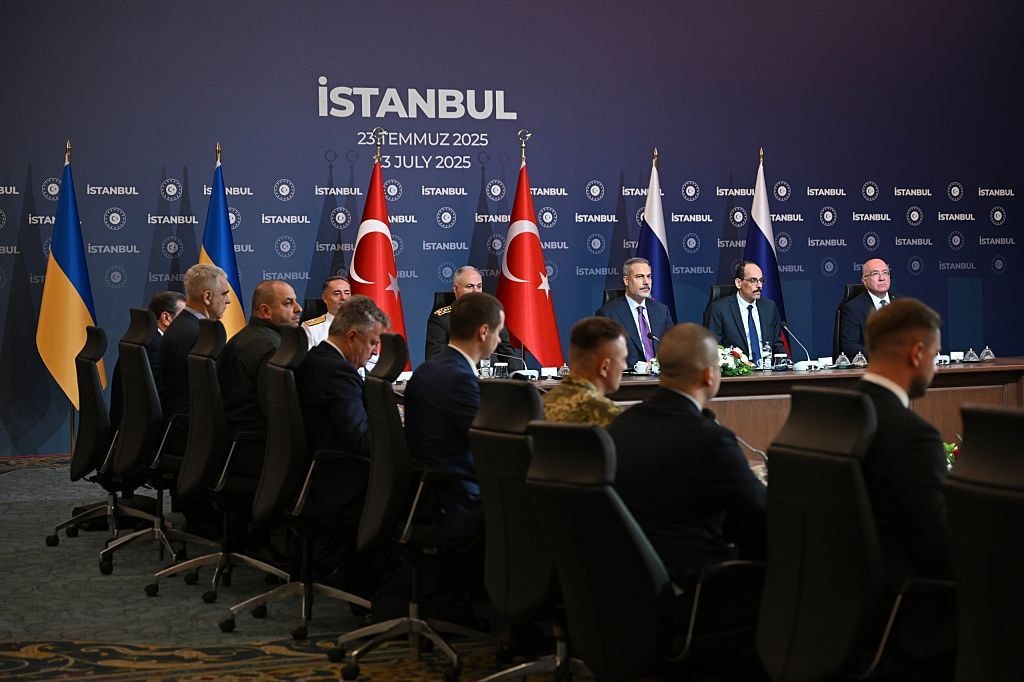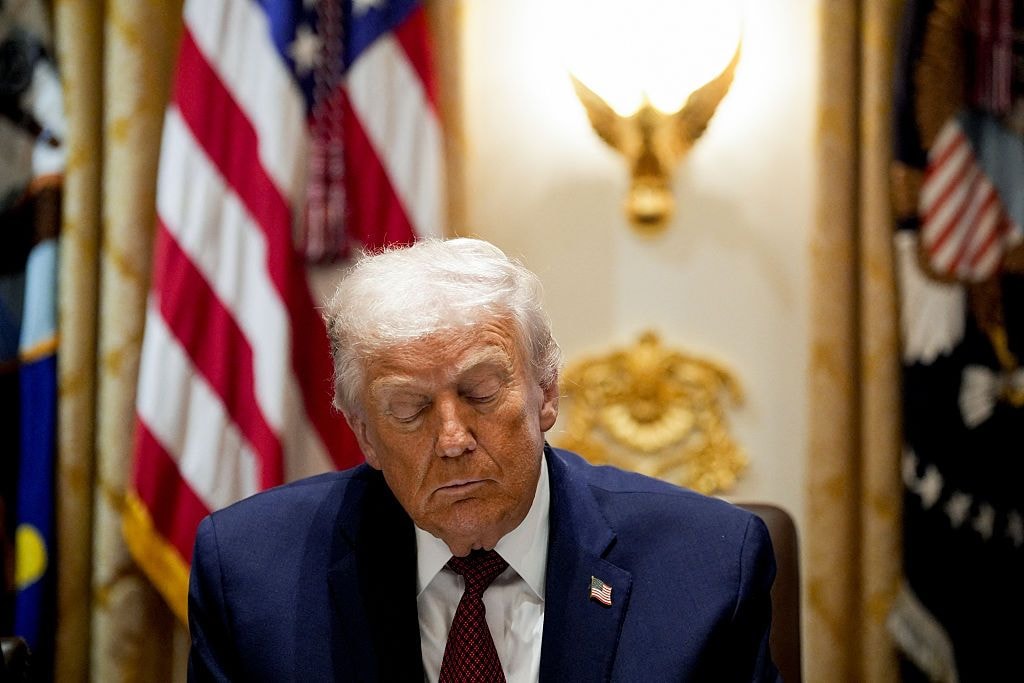
Europe to take helm in Ramstein, as US vacates its leading role
Keir Starmer, UK prime minister, left, and Mark Rutte, secretary general of the North Atlantic Treaty Organization (NATO), during a meeting at the NATO headquarters in Brussels, Belgium, on Monday, Feb. 3, 2025. (Simon Wohlfahrt/Bloomberg via Getty Images)
The U.K. is set to gather the Ukraine Defense Contact Group on Feb. 12, taking over the role the U.S. had assumed at the start of the all-out war.
With U.S. President Donald Trump pulling his country out of established international agreements and formats, it's now up to European countries to fill in the gaps.
"Now, it will be mostly the Europeans who will determine the volume and range of weapons they are willing to provide to Ukraine," lawmaker Yehor Cherniev told the Kyiv Independent.
Cherniev, who chairs Ukraine's delegation at the NATO Parliamentary Assembly, said that European nations would likely focus on supplying their self-produced weapons and ammunition to Ukraine.
"The U.S. will continue to provide us with assistance, but the main burden will now be shifted to Europe," Cherniev said. "The U.K.'s presidency in the Ramstein format symbolizes the changes in support for Ukraine that will take place in 2025."
The U.K. Joint Delegation to NATO said last week that Defense Secretary John Healey will chair the upcoming gathering of the Ukraine Defense Contact Group (UDCG), also known as the Ramstein meeting, in Brussels to discuss Ukraine's defense priorities.
Ukraine's pressing needs include bolstering the country's air defense, its deep-strike capabilities, and securing a steady ammunition supply, Ukraine's Ambassador to NATO Natalia Galibarenko said.
"We expect strong participation from our partners and look forward to hearing new pledges of military support," Galibarenko told the Kyiv Independent, saying that the three topics to be discussed at the Ramstein meeting are: "the situation on the battlefield, Ukraine's security needs, and the pledges made by our partners and allies."
U.S. Defense Secretary Pete Hegseth will attend the meeting in Brussels but won't be announcing new military shipments to Ukraine.
Washington's withdrawal
London's takeover of the meeting that gathers over 50 nations to discuss Ukraine's defense needs holds "a symbolic political meaning," according to lawmaker Oleksandr Merezhko, head of the parliament's committee on foreign policy.
He added that the meeting was to show that Europe would continue to support Kyiv no matter what happened in the U.S.
Contrary to Cherniev's assessment, Merezhko believes that the U.S.' will return to the driving seat after "a transition period" following Trump's return to power.
"I hope that they will return soon to their traditional leadership role," Merezhko told the Kyiv Independent.
The adjustment in the regular Ramstein meetings comes as Ukraine and Europe await Trump's next moves. Uncertainty looms over whether the Ramstein meeting would even exist under Trump.
The U.S. president has claimed to have a plan to end the war in Ukraine and said he is in contact with Russian President Vladimir Putin.

Hegseth, who'll begin his European tour with the Ramstein meeting in Brussels, will stress "Trump's commitment for a diplomatic end to the war in Ukraine as quickly as possible" and Europe's boosting of security assistance to Kyiv, according to an official statement by the Pentagon.
Liana Fix, a fellow for Europe at the American think tank Council on Foreign Relations (CFR), agreed that it was already good news that Ramstein continues regardless of the change in the U.S. leadership and that Hegseth will still take part in it.
Rather than waiting for Trump's presidency, Europe should have long taken over Washington's leadership role at Ramstein and suggested a rotation system of European chairs to lift the weight, Fix said.
The Trump administration is demanding that European nations "take over the security" and assistance for Ukraine, but it should also be in Europe's interest to take the lead if it deems it as "existential" to its future, according to the expert.
"I think it was very comfortable for Europeans to rely on the U.S. leadership, and then there's also the question of who would lead Europe," Fix said, adding that "it's always a competition between the U.K., France, Germany, and Poland."
The downside, Fix explained, is that the U.S. is making less commitments because it won't be chairing the meeting, and the concern is how far London and Washington could push for more support for Ukraine — and whether the latter would even try pressuring other countries.
With Keith Kellogg, Trump's special envoy for Ukraine and Russia, saying that the president would try to create leverage for both sides to kickstart potential peace negotiations, securing more weapons and resources has become ever more important for Kyiv.
The past 25 rounds of Ramstein meetings, usually taking place at Ramstein Air Base in Germany, have helped Kyiv to receive over $145 billion in military aid from NATO countries, according to the Ukrainian Defense Ministry. The first-ever meeting was held in April 2022 and chaired by then-U.S. Defense Secretary Lloyd Austin, who was instrumental in gathering dozens of countries to discuss Ukraine's needs.
The "crucial platform for coordinating military aid" has enabled Kyiv to receive basic resources from artillery shells, armored vehicles and tanks to modern air defense systems and U.S.-made F-16 fighter jets, the Ukrainian Defense Ministry said in its January report.
The February Ramstein meeting takes place at a crucial time when Ukrainian forces lose one settlement after another in the country's eastern Donetsk Oblast amid a critical manpower shortage.
"The only way a ceasefire can be achieved is through increasing leverage on Russia, and that includes continuous weapon deliveries and continuous provision of weapons to Ukraine by the Ramstein format," Fix said.


